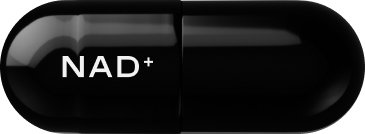

Have you ever wondered what it is that drives a person to keep going, despite facing adversity or difficult challenges? Even more interestingly, what compels some people not to give up while others call it quits?
Dopamine, a neurochemical, plays a crucial role in enhancing motivation and reinforcing perseverance for personal growth by creating an internal reward system and encouraging positive behaviors while overcoming challenges.
Recent research has highlighted an important region of the human brain responsible for perseverance and personal growth: the anterior cingulate cortex (ACC). Neural mechanisms, including dopamine signaling, are a key factor in the ability to persevere through challenges. The complex interplay between brain regions, neurochemicals, and psychological factors drives perseverance and resilience. Understanding the ACC can offer valuable insights to unlock our own inner strength, enabling us to rise above life’s toughest challenges. Given that grit and determination are key to making lasting lifestyle changes, here’s how to get better at doing hard things.
If you're looking to boost mental clarity and strengthen your ability to tackle tough challenges, supporting the brain’s cognitive centers—like the ACC—is key. The ACC plays a central role in decision-making, emotional regulation, and perseverance, especially when faced with mentally demanding tasks. Sharpen by Tally Health is formulated with 200mg of choline to promote memory, focus, and cognitive performance—helping you stay mentally resilient when it matters most. Whether you're pushing through a workout or powering through a workday, Sharpen is designed to help your brain rise to the challenge.
What is the anterior cingulate cortex?

The ACC is a structure that lies over the corpus callosum, an area that connects the left and right hemispheres of the brain. This advantageous position allows the ACC to establish connections with both the limbic system (“the behavioral and emotional center”) and the prefrontal cortex (the “personality center”). The ACC interacts with other brain regions and brain structures involved in motivation and reward, such as the ventral striatum and anterior insular cortex. The ACC is known for its role in cognitive control, positive emotions, and pain [1, 2], as well as decision-making, impulse regulation, emotional processing, and reward anticipation. Dopamine neurons play a key role in reinforcing behaviors through reward processing, further linking the ACC to motivational neural circuits. The ACC also contributes to a person's sense of motivation and emotional awareness.
A portion of the ACC, known as the anterior midcingulate cortex (aMCC), is involved in emotional appraisal (how thoughts around a situation impact a person’s emotional state), conflict monitoring, approach-avoidance decisions, and willed control of actions [1]. The dorsal ACC, a subregion of the ACC, is particularly important for performance monitoring and error evaluation. In essence: When we’re doing something that’s hard but we know is good for us (such as lifting weights or learning a new language), the ACC is constantly scanning and monitoring the situation and deciding whether all the energy we’re using is really worth it or whether we should call it a day and do something else. This ongoing activity involves neural processes and performance monitoring, including the ACC's involvement in making mistakes and the neural correlates of error processing.
Growth mindset: The ACC and perseverance in the prefrontal cortex

Who doesn’t love an underdog story? We love to see people who are able to overcome challenges and succeed against the odds in a display of human resilience. Our ACCs play a role in this, and research indicates that those with denser ACCs possess greater perseverance [3]. In fact, when faced with a difficult task, the activity in the aMCC is directly linked to the level of perceived effort reported by individuals [4].
Those with higher aMCC activity are more willing to invest effort when weighing the costs and benefits of different options [5]. Interestingly, when presented with a choice between an easy and a difficult task, the aMCC is activated when individuals opt for the more challenging option [6]. Not surprisingly, depression has been associated with aMCC dysfunction, specifically reduced gray matter density and decreased activation during challenging tasks [7, 8].
A captivating study demonstrated that electrical stimulation of the aMCC invokes in participants a strong determination to persevere. They likened this feeling to braving a storm, with an internal drive compelling them to “fight it” [9].
ACC powerhouses: Athletes and superagers

Athletes and “SuperAgers” share a unique advantage: they are renowned for possessing denser and healthier anterior cingulate cortices. Athletes, who regularly push their limits both physically and mentally, display an uncanny capacity for perseverance, which has been linked to robust ACC health [10].
On the other hand, “SuperAgers” are a select group of elderly individuals (age 80 and over) who defy the normal boundaries of cognitive aging [11]. Their mental agility and sharpness, akin to those in their youth, have been tied to the superior health of their ACC. This impressive brain region not only plays a critical role in tenacity and grit but also appears to be a potent ally in maintaining cognitive control, sharpness and resilience to delirium with age [12].
A call to tenacity: Embracing the challenge with intrinsic motivation

While there are ways to activate brain structures such as ACC so you can build more perseverance and determination over time, these tips may not be the most comfortable or the easiest; however, we’ve tried to find valuable science-backed strategies to set you up for success and kick start your internal reward system:
Choose the challenging task over easily achievable goals:
Hate weight lifting? Incorporate more weightlifting into your routine. Rather take the elevator than the stairs? Opt for the stairs anyway. If warm showers are your comfort zone, challenge yourself to a cold one. Not sure if your task is challenging enough? Gauge it by how much you'd rather do something else, such as playing on your phone. If you have a strong desire for other activities or experience resistance when starting the task, it indicates that the task is likely challenging enough to activate your ACC.
Reward effort, not the outcome for positive emotions:
When given a choice, both humans and animals tend to avoid effort because, honestly, doing hard things is hard [13]. However, research shows that rewarding the effort rather than the outcome increases peoples’ preferences for seeking out challenging tasks in the future [14]. Just more proof that when reaching our goals, it’s just as important to reward and recognize the journey rather than the destination.
Find the value in your efforts to stay motivated:
Effort just for effort’s sake kind of goes against the “Effort Paradox” (aka humans like to avoid expending energy). People who possess a positive attitude in times of effort tend to have higher levels of both life and job satisfaction and better well-being [15]. These people also manage to experience more meaning in their efforts, even when tasks are boring. So while you might want to avoid going to the gym, if you know that the unpleasant task of working out will help you function independently in your 80s and beyond, the effort becomes far more valuable.
Combine mentally and physically demanding tasks:
Combining mental and physical stress might sound like some form of torture, but stay with us: Research indicates that after we complete a mentally demanding task, we actually perform better at physically demanding challenges [16]. In this study, the group that had trained for a mentally demanding task along with physical activity increased their time to exhaustion by 126%, or 3x more than the control group (+42%), once the mentally demanding task was removed.
While we don’t recommend doing this during an intense workout, if you’re doing a more moderate workout (80-85% of your maximum effort), this could be the ideal time to also train your brain. And if this sounds particularly horrible, that’s great—you’ll probably activate your ACC.
What is the anterior cingulate cortex (ACC)?
The ACC is a structure that lies over the corpus callosum, an area that connects the left and right hemispheres of the brain. It establishes connections with both the limbic system and the prefrontal cortex and plays a central role in decision-making, emotional regulation, and perseverance.
How does the ACC influence motivation and perseverance?
The ACC interacts with brain regions involved in motivation and reward, and dopamine neurons reinforce behaviors through reward processing. Activity in the anterior midcingulate cortex (aMCC), a part of the ACC, is linked to perceived effort, willingness to take on difficult tasks, and even the internal drive to “fight” through challenges.
Why do athletes and “SuperAgers” have an advantage in perseverance and cognitive control?
Athletes and SuperAgers are known to possess denser and healthier ACCs. This contributes to their enhanced tenacity, mental sharpness, and resilience—especially as they age. SuperAgers, in particular, maintain youthful cognitive performance well into their 80s due to the superior health of their ACC.
Recommended Supplements
Citations
[1] Stevens, F. L., Hurley, R. A., & Taber, K. H. (2011). Anterior cingulate cortex: unique role in cognition and emotion. The Journal of Neuropsychiatry and Clinical Neurosciences, 23(2), 121-125. https://doi.org/10.1176/jnp.23.2.jnp121
[2] Aarts, E., & Roelofs, A. (2008). Anticipatory Activity in Anterior Cingulate Cortex Can Be Independent of Conflict and Error Likelihood. The Journal of Neuroscience, 28(18), 4671-4678. https://doi.org/10.1523/JNEUROSCI.4400-07.2008
[3] Van Schuerbeek P, Baeken C, De Raedt R, De Mey J, Luypaert R. Individual differences in local gray and white matter volumes reflect differences in temperament and character: a voxel-based morphometry study in healthy young females. Brain Res. 2011 Jan 31;1371:32-42. doi: 10.1016/j.brainres.2010.11.073. Epub 2010 Nov 29. PMID: 21126511.
[4] Mulert C, Menzinger E, Leicht G, Pogarell O, Hegerl U. Evidence for a close relationship between conscious effort and anterior cingulate cortex activity. Int J Psychophysiol. 2005 Apr;56(1):65-80. doi: 10.1016/j.ijpsycho.2004.10.002. Epub 2004 Nov 11. PMID: 15725491.
[5] Chong, J., Apps, M., Giehl, K., Sillence, A., Grima, L. L., & Husain, M. (2017). Neurocomputational mechanisms underlying subjective valuation of effort costs. PLoS Biology, 15(2). https://doi.org/10.1371/journal.pbio.1002598
[6] Touroutoglou, A., Andreano, J., Dickerson, B. C., & Barrett, L. F. (2020). The Tenacious Brain: How the Anterior Mid-Cingulate Contributes to Achieving Goals. Cortex; a Journal Devoted to the Study of the Nervous System and Behavior, 123, 12. https://doi.org/10.1016/j.cortex.2019.09.011
[7] Kumar P, Waiter G, Ahearn T, Milders M, Reid I, Steele JD. Abnormal temporal difference reward-learning signals in major depression. Brain. 2008 Aug;131(Pt 8):2084-93. doi: 10.1093/brain/awn136. Epub 2008 Jun 25. PMID: 18579575.
[8] Goodkind, M., Eickhoff, S. B., Oathes, D. J., Jiang, Y., Chang, A., Jones-Hagata, L. B., Ortega, B. N., Zaiko, Y. V., Roach, E. L., Korgaonkar, M. S., Grieve, S. M., Galatzer-Levy, I., Fox, P. T., & Etkin, A. (2015). Identification of a Common Neurobiological Substrate for Mental Illness. JAMA Psychiatry, 72(4), 305. https://doi.org/10.1001/jamapsychiatry.2014.2206
[9] Parvizi J, Rangarajan V, Shirer WR, Desai N, Greicius MD. The will to persevere induced by electrical stimulation of the human cingulate gyrus. Neuron. 2013 Dec 18;80(6):1359-67. doi: 10.1016/j.neuron.2013.10.057. Epub 2013 Dec 5. PMID: 24316296; PMCID: PMC3877748.
[10] Zhang, K., Jan, Y., Liu, Y., Ting, Z., Zhang, L., Liu, R., … & Cao, C. (2022). Exercise intensity and brain plasticity: what’s the difference of brain structural and functional plasticity characteristics between elite aerobic and anaerobic athletes?. Frontiers in Human Neuroscience, 16. https://doi.org/10.3389/fnhum.2022.757522
[11] National Institute on Aging. (2018, April 23). Cognitive super agers defy typical age-related decline in brainpower. https://www.nia.nih.gov/news/cognitive-super-agers-defy-typical-age-related-decline-brainpower
[12] Wong, B., Katsumi, Y., Cavallari, M., Fong, T. G., Alsop, D. C., Andreano, J. M., … & Touroutoglou, A. (2023). Structural integrity of the anterior mid‐cingulate cortex contributes to resilience to delirium in superaging. Alzheimer's &Amp; Dementia, 19(S3). https://doi.org/10.1002/alz.061220
[13] Inzlicht, M., Shenhav, A., & Olivola, C. Y. (2018). The Effort Paradox: Effort Is Both Costly and Valued. Trends in Cognitive Sciences, 22(4), 337. https://doi.org/10.1016/j.tics.2018.01.007
[14] Clay, G., Mlynski, C., Korb, F. M., Goschke, T., & Job, V. (2022). Rewarding cognitive effort increases the intrinsic value of mental labor. Proceedings of the National Academy of Sciences, 119(5), e2111785119. https://doi.org/10.1073/pnas.2111785119
[15] Campbell, A. V., Chung, J. M., & Inzlicht, M. (2022, June 26). Meaningfulness of Effort: Deriving Purpose from Really Trying. https://doi.org/10.31234/osf.io/sg3aw
[16] Marcora, S.M., Staiano, W., & Merlini, M. (2015). A Randomized Controlled Trial of Brain Endurance Training (BET) to Reduce Fatigue During Endurance Exercise. Medicine & Science in Sports & Exercise.











